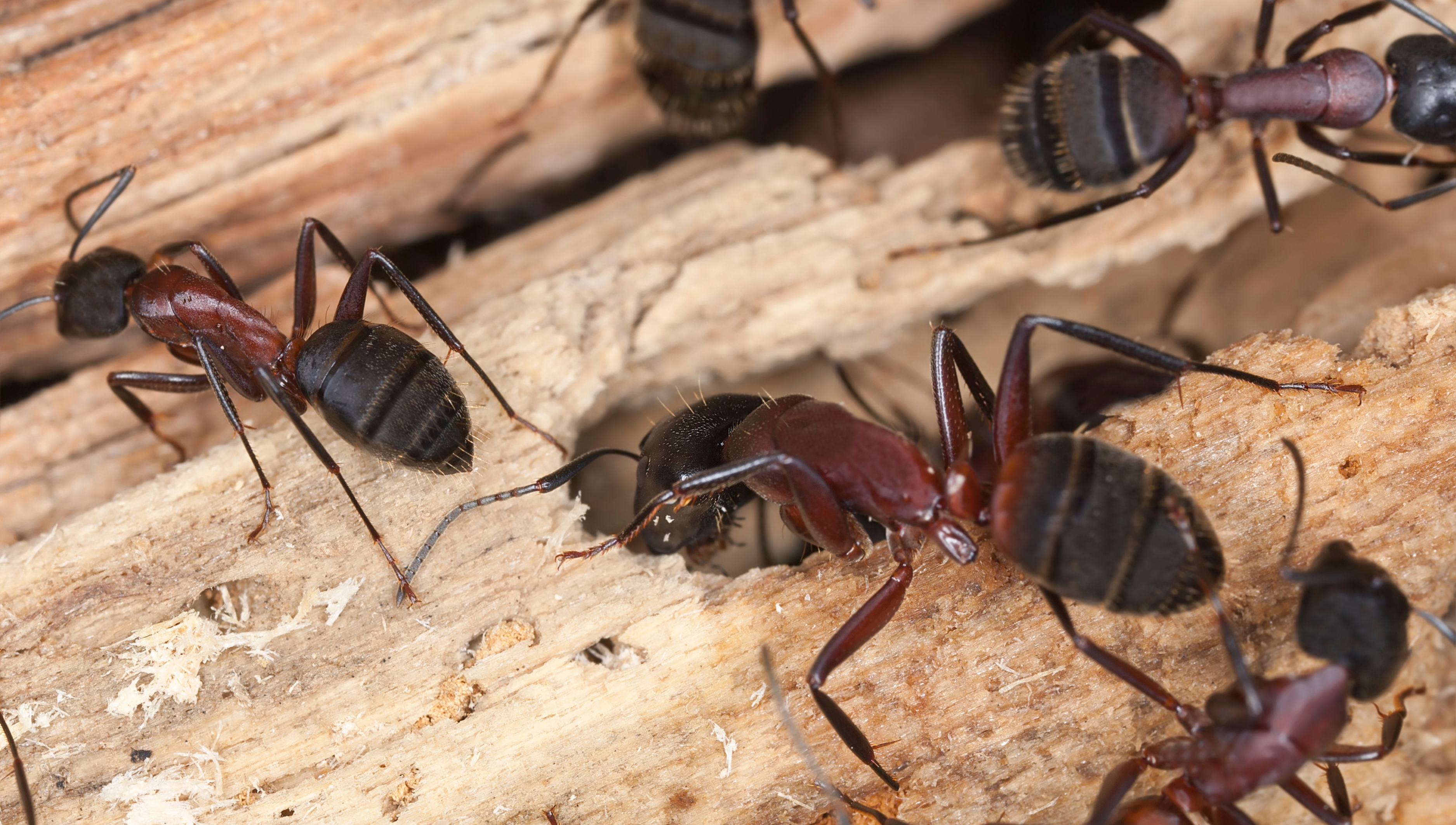CARPENTER ANTS
Your Ant Problem, Gone For Good, Guaranteed.
Request a Callback
We’ll give you a call to discuss the best pest application for you:

DESCRIPTION:
BIOLOGY:
___
Ants in general have a complete life cycle consisting of egg, larva, pupa, and adult. From a single mating the female ant, now to be a “queen” in her own colony, stores all the sperm from the male in a special sac called a spermatheca, and she diligently withdraws the sperm as needed for fertilization of her eggs over her entire lifetime. She does not mate again. Carpenter Ants usually have only one queen per colony (There are exceptions to this general rule). The adult carpenter winged female or queen loses her wings soon after mating with the smaller male and selects a secluded nesting site where she raises the first brood of workers. These workers are very small but assume the care of the larvae and the queen after they mature. The queen at that point is an egg laying machine and her sole function for the rest of the life of the colony is producing eggs. Future workers are larger than those from the first brood because they receive better care. All workers are wingless. Each and every working ant is a sterile female. No male ant participates in the activities of an ant colony, other than the mating flight. Many of these larger ants have large jaws, and they can bite. This is the case with Carpenter ants, and once they have bitten and caused a little nick in the skin they then spray some formic acid from their abdomen, and this acid causes a stinging sensation.

HABITS:
___
Carpenter Ants forage at night and they love sweets. Carpenter ants find their protein mainly in the form of other insects. As they tunnel their way through the wooden structures in the home they carve off a piece of wood with their mandibles and cast it aside as refuse. When the chambers they are in get too full of this refuse, they bore a slit to the outside world and push the refuse out of the chamber (that could be called housecleaning). The Primary Nest of the Carpenter Ant is almost always out of doors–in an old tree stump or in a hole left when a branch broke off of a tree or in a fence post or other substantial mass of cellulose material. This primary colony may be as far away from the house as 500 feet. Ants from the primary colony then make their way into the home involved with leaving a pheromone scent trail for other ants to follow. If conditions in the home are favorable–that is if there is a suitable void available and enough food present, a secondary or satellite nest may be established and larvae and pupae carried from the primary nest to this secondary nest to be taken care of there until they reach the adult stage. When infested with Carpenter Ants you will hear a frantic rustling noise caused by the ants that were disturbed by knocking on the outside of the wall.
Secondary nests can occur in any void space in the house or in any galleries that the worker ants have carved out. If there is a moisture condition caused by a leaky pipe or a malfunctioning roof gutter, or any other cause of a moisture problem, it is probable that the secondary nest will be located in or next to that affected area. Larvae and pupae, but no eggs will be found in the secondary nest. The trick is to knock on the door, wall, etc. and then put your ear up to it and listen.
There is a general rule that only about 10% of the members of a colony are out foraging for food at any one time. A Carpenter Ant colony must usually be over six years old and must contain at least 2,000 individuals before it will put off a swarm of alates (winged adult male and female ants). A colony that has been in existence for a long time may have 50,000 to 100,000 individuals in it.

